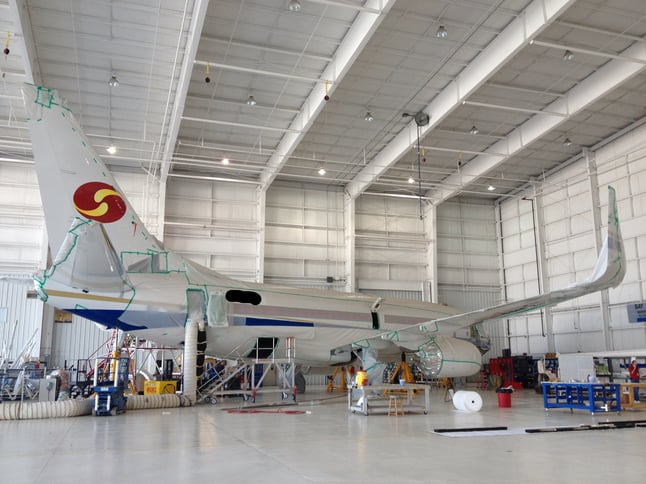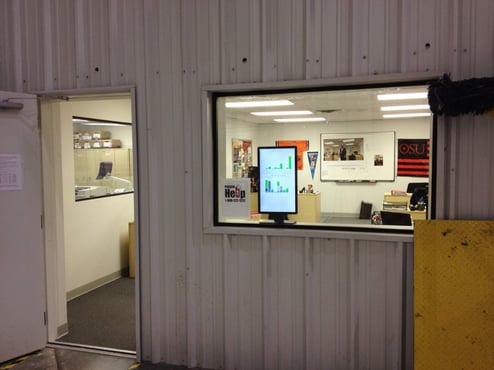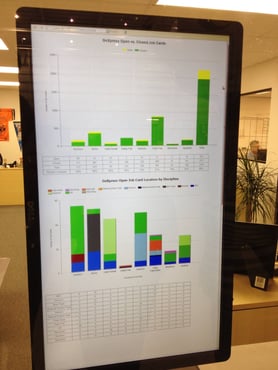I wanted to write a blog about ATLAS and how it came to be, but in order to do that, you have to start at the beginning. Not the beginning where Tim took ATLAS to SOLIDWORKS World in 2015, but before that. The earliest he could think of ATLAS manifesting itself in his brain. This was back in 2012 at BizJet in Tulsa, Oklahoma. Tim revolutionized that production floor, starting with a way for the production floor, management, and engineering to check progress more easily than relying on word of mouth communication.
Have you ever seen the inside of a VIP luxury jet and wondered how they're made? At BizJet (member of Lufthansa Technik), that's what they did. Tim also did some of the most phenomenal work of his career there. In his role as the Aircraft Document Control Manager and Data Strategy Director, He was the one who designed and implemented the "Job Card Channel," ATLAS's predecessor. Tim has been more excited about this blog than possibly anything else, ever, so I'm just going to give you an excerpt of his exact words.
.png?width=546&name=image%20(5).png)
.png?width=376&name=image%20(6).png)
BizJet used a combination of 40 SOLIDWORKS seats for mechanical design, 35 AutoCAD seats for electrical wiring and 200 SOLIDWORKS PDM seats for data management and document distribution. It was a very busy workplace with lots of opportunity for creative solutions. If there's anything we know about creative environments, it also causes some arguments. There were arguments at BizJet daily. Now that you have some more background on what BizJet used to do (they are now primarily an authorized Rolls-Royce maintenance facility), we can jump in to how ATLAS transformed the VIP Interior Completions at BizJet.
Per usual, he doesn't take credit for his genius. He said that his creativity there was not his own, it was brought out of him by Vice President of Aircraft Interior Completions, Steve Cashon. All Tim did was listen to Steve's needs and fit the innovation to them. He placed a lot of emphasis on not bringing your own creativity to the table in these positions, but letting the position pull the creativity out of you. In addition to this, he told me that Steve insisted that any solutions Tim came up with be approved by those who would be using them. This is a tip that Tim has carried with him through his career, and he finds that it's wildly successful. Handing someone a solution that they're not on board with "will result in them handing it back to you in pieces."


Tim did this by implementing a TV screen displaying job card routing status. It was called the "Job Card Channel," like a television channel. Initially, he was challenged by the shop floor supervisors and their technicians on the "dashboard" and it's ability to be accurate, but he just said "Give it a chance. If it doesn't work, we'll take it down." It had a delay of up to 15 minutes, but it was accurate enough that nobody ever readdressed concerns. Tim had done it, production and management were out of each other's hair, and everyone was happier for it.
ATLAS looks a little bit different nowadays. Keep an eye out for next week's blog to learn more about The Road to ATLAS! .jpg?width=1920&name=atlas%20top%20level%20(2).jpg)
Here's a peek at what ATLAS Premium looks like. If you're interested in learning more about ATLAS, but don't want to wait for our next blog, schedule a meeting or check out the resources we have available now!




 EQUIVAQ SOFTWARE offers Apps to enhance the lives of SOLIDWORKS PDM Administrators and users by offering advanced PDM Add-in Apps for an affordable monthly license fee in order to bring PDM automation within reach.
Our products are straight forward and come with detailed easy setup instructions to get you started.
EQUIVAQ SOFTWARE offers Apps to enhance the lives of SOLIDWORKS PDM Administrators and users by offering advanced PDM Add-in Apps for an affordable monthly license fee in order to bring PDM automation within reach.
Our products are straight forward and come with detailed easy setup instructions to get you started.